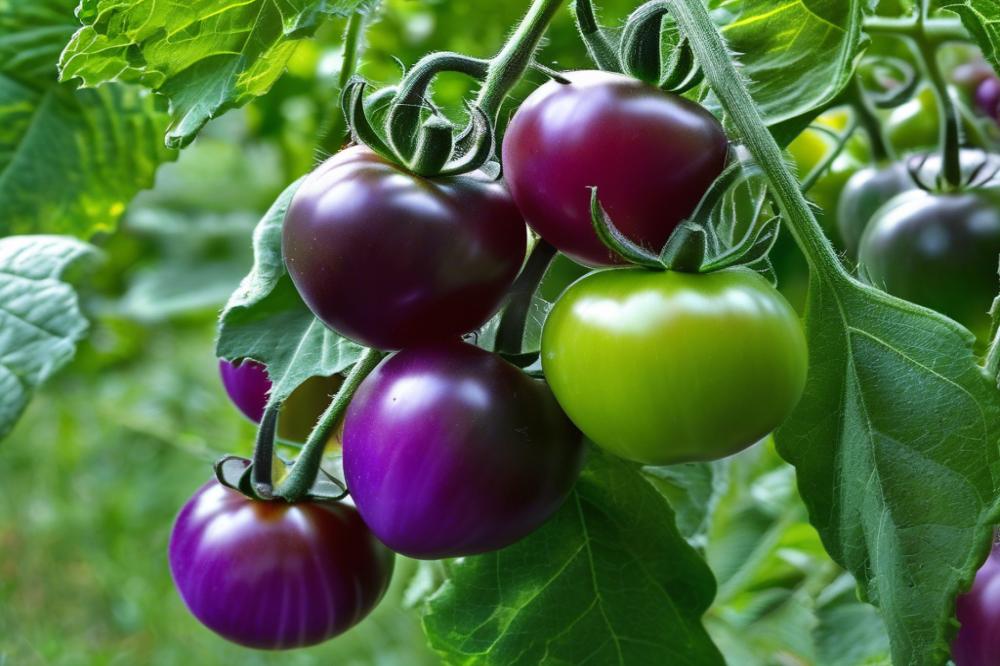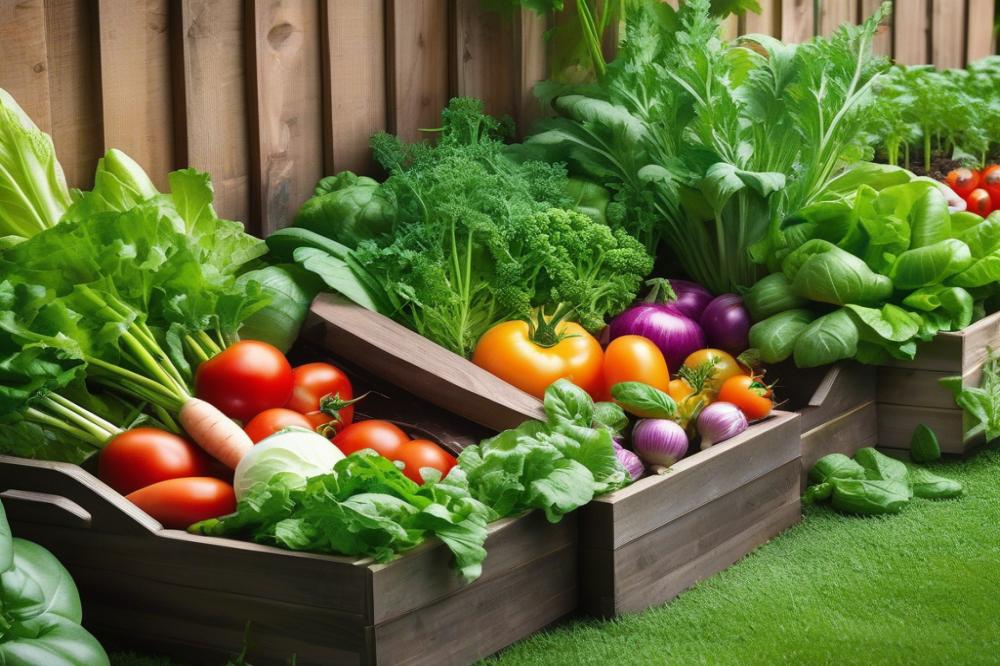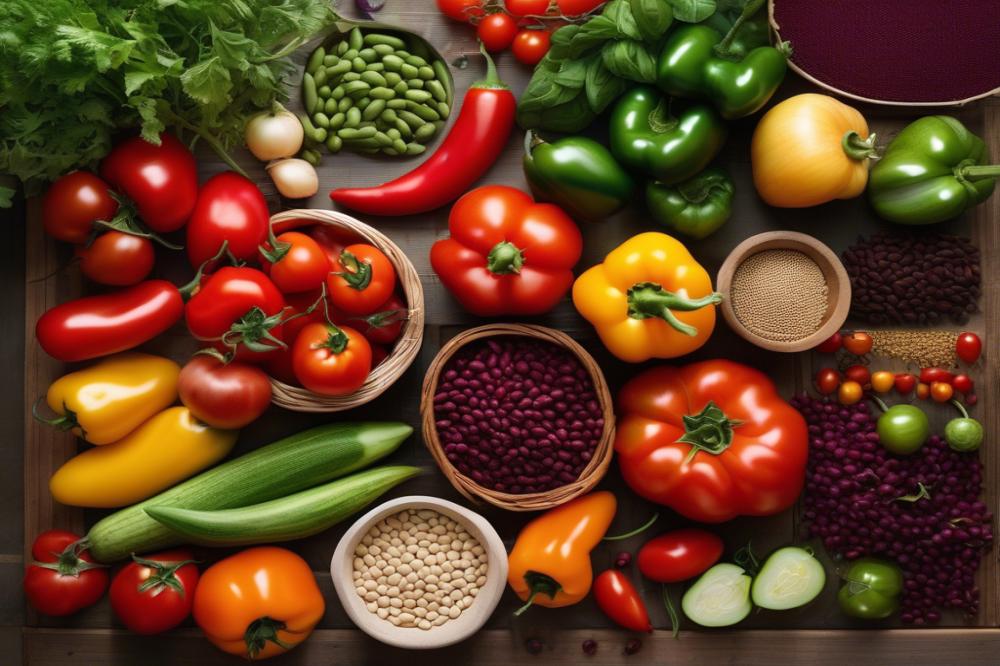How to Cultivate Aunt Ginny’s Purple Tomatoes for Juicy Fruits
Aunt Ginny’s Purple Tomatoes represent a celebrated heirloom variety that many gardeners cherish. Their deep, rich hue makes them distinct in any garden. When fully ripe, these tomatoes offer a beautiful purple color that can catch anyone’s eye. Their flavor is nothing short of extraordinary. This variety boasts a sweet yet slightly tangy taste, adding a delightful punch to salads, sauces, and sandwiches. For gardening enthusiasts, growing heirloom tomatoes like these brings a sense of satisfaction and connection to traditional farming methods.
In the context of organic gardening, heirlooms bring their own set of advantages. They often thrive without the use of synthetic chemicals, which is appealing for those pursuing a healthier lifestyle. By practicing sustainable gardening techniques, you benefit both your health and the environment. Cultivating these tomatoes supports biodiversity and preserves agricultural history.
When it comes to tomato care, adequate soil preparation is key. Creating a nutrient-rich environment encourages strong growth and bountiful harvests. Understanding how to grow tomatoes effectively can lead to remarkable results. Proper planting tips, including spacing and sunlight requirements, will help your plants flourish. This heirloom variety also requires regular watering and attention to pests.
The journey of growing Aunt Ginny’s Purple Tomatoes offers both challenges and rewards. Each step, from selecting the right seeds to harvesting the juicy fruits, allows for a deeper appreciation of the gardening process. Embrace this experience, and you may find that your efforts yield delicious results and a vibrant garden.
Understanding Aunt Ginny’s Purple Tomatoes


Aunt Ginny’s Purple Tomatoes are a delightful variety adored by gardeners and chefs alike. These heirloom tomatoes present a stunning, dusky purple hue, enriching any garden with their vibrant color. This variety is known for its unusual shape, often taking on a slightly elongated form, which can be quite striking when displayed in a basket. Their skin is tender, yet firm, making them a joy to handle during harvest.
Growth habits can greatly influence your gardening success. This variety thrives in warm climates and needs full sun to flourish. Staking the plants helps support their growth, as they can become quite tall, often reaching heights of six feet or more. Spacing the plants appropriately will also encourage air circulation, which is vital for healthy development.
The taste profile of these tomatoes is another reason to cultivate them. Juicy and sweet, they offer a rich flavor that can elevate any dish. Many gardeners describe the taste as complex, with a pleasing sweetness balanced by mild acidity. This makes them perfect for fresh salads, sauces, or just snacking straight from the vine.
Historically, these purple tomatoes have a fascinating backstory. They hail from the southern United States, passed down through generations. Many families have treasured their unique flavor and appearance, contributing to local culinary traditions. Growing these tomatoes connects gardeners with a piece of history, fostering a sense of community through shared cultivation practices.
Advantages abound when choosing this variety for your home garden. First, they are robust and can adapt to different garden techniques. Organic gardening methods work especially well since these tomatoes can thrive without synthetic fertilizers. Furthermore, they show resilience against common tomato diseases, making them a reliable choice for novice and experienced growers alike.
Proper soil preparation is essential for success. Amending the soil with compost can enhance its nutrients, supporting vigorous growth. When planting, incorporate plenty of organic matter to promote a thriving root system. These practices help produce plump tomato fruits that burst with natural sweetness.
Utilizing effective tomato care routines is critical. Regular watering is important, particularly during dry spells. Mulching can also be beneficial, as it reduces moisture loss and suppresses weeds. Following these planting tips will set you on a path to enjoy a bountiful harvest.
Whether you grow them for personal enjoyment or to share the bounty with others, Aunt Ginny’s Purple Tomatoes are well worth the effort. Each step in their cultivation journey brings anticipation and excitement. The prospect of tasting these extraordinary tomatoes makes gardening truly rewarding.
Soil Preparation for Optimal Growth


Soil quality plays a crucial role in growing healthy tomatoes. It holds the key to successful cultivation and a good harvest. Focus on the right soil types to create an environment where plants can thrive.
Aunt Ginny’s Purple Tomatoes prefer well-draining soil rich in organic matter. Loamy soil is ideal, as it combines sand, silt, and clay. This mixture allows for good aeration and moisture retention. Aim for a pH level between 6.0 and 7.0. Checking the pH can help improve nutrient availability for the plants.
Nutrients matter greatly when it comes to planting tips for heirloom tomatoes. The soil should be complemented with essential macronutrients like nitrogen, phosphorus, and potassium. Micronutrients such as calcium and magnesium are also necessary for robust plant growth and healthy tomato fruits.
Start the soil preparation process well before planting. Begin by clearing the garden area of any weeds or debris. Testing the soil is a wise first step. Kits are available at gardening stores, making it easy to determine pH and nutrient levels. Incorporate organic compost into the soil to boost fertility.
Amend the soil as needed based on the test results. If the pH is too low, add lime. For high acidity, sulfur can be beneficial. Maintaining balanced nutrients will guide the plants toward optimal growth. Create planting beds that are at least 12 inches high. This design helps promote drainage. Good drainage prevents root rot, which is essential in tomato care.
Lastly, till the soil to a depth of about 12 to 15 inches. This step blends in the compost and amendments thoroughly. Leaving the soil loose and crumbly will encourage roots to spread freely. With the right soil preparation, you will be ready for a bountiful harvest of juicy purple tomatoes.
Planting Tips and Techniques


When starting your journey with Aunt Ginny’s Purple Tomatoes, timing is crucial. Plant these heirloom tomatoes after the last frost in your area. Waiting until the soil warms allows seedlings to thrive. Most gardeners find that late spring is ideal.
Space your plants wisely. Each seedling needs enough room for growth, so aim for a distance of 24 to 36 inches between plants. This spacing promotes airflow, which helps prevent diseases. Moreover, from plant to plant, this arrangement supports healthier roots.
Dig holes that are around 18 to 24 inches deep. This depth accommodates the roots well and provides stability. Position the seedlings so that at least half of the stem is below the soil. As a result, this encourages strong development and promotes better absorption of nutrients.
Companion planting plays a significant role in successful gardening. Consider growing basil alongside your tomatoes. This duo not only enhances flavor but also deters pests. Other beneficial companions include marigolds and garlic, which help keep unwanted insects away.
Soil preparation can make a huge difference. Enrich your garden soil with compost or well-rotted manure before planting. This organic matter boosts fertility and improves moisture retention. Testing soil pH can also guide adjustments, aiming for a balanced pH of around 6.0 to 6.8.
Watering techniques matter as well. After planting, make sure to water the soil gently to avoid disturbing the roots. Consistent moisture is key for these purple tomatoes, especially during dry spells. Avoid letting soil dry out, as this leads to stress and poor fruit development.
Understanding the light requirements also helps. Tomatoes thrive in full sunlight, requiring at least six to eight hours of direct sunlight daily. Strategically place your plants in areas that maximize sun exposure throughout the day.
During growth, keep an eye on weeds. Removing them promptly reduces competition for nutrients and moisture. Regular attention to your garden leads to higher yields and healthier plants.
Tomato Care Throughout the Growing Season
Growing Aunt Ginny’s Purple Tomatoes requires special attention. Start by developing a solid watering schedule. Tomatoes thrive with consistent moisture, so watering deeply and regularly is essential. Typically, a soil moisture of about one inch per week is ideal. If rain is scarce, water at least twice a week. During dry spells, consider increasing the frequency to prevent stress on the plants.
Mulch plays a crucial role in maintaining soil moisture. Applying organic mulch can help retain moisture and suppress weeds. Composted leaves, straw, or grass clippings work well. Spreading a two to four-inch layer around the base of the plants helps regulate temperatures and enhances soil quality.
Pest management is another key component of successful tomato care. Regular inspections will help spot any pests. Common issues include aphids and tomato hornworms. Implement organic gardening techniques to control these pests naturally. Insects like ladybugs and lacewings can aid in pest management. You might also consider using neem oil for more stubborn infestations.
Pruning is an important practice that often gets overlooked. Removing suckers—the small shoots that grow in the leaf axils—allows the plant to focus its energy on producing fruit. Aim to prune early in the morning to minimize stress on the plant. This practice promotes better air circulation and reduces the risk of disease.
Support systems enhance the growth of heirloom tomatoes. Install sturdy cages or stakes before plants get too big. Bamboo stakes or metal cages will hold the plants upright and keep the fruits off the ground. This prevents rot and helps with airflow around the tomato fruits, promoting healthy growth.
Soil preparation lays the foundation for a fruitful growing season. Test your garden soil before planting. Adjust the pH to between 6.0 and 6.8 for optimal growth. Enrich the soil with compost to improve texture and nutrient content. Healthy soil supports robust tomato development.
As the growing season progresses, keep an eye on growth and development. Notice changes in the plants and react accordingly. Each stage of growth may require adjustments in care practices for the healthiest plants and the juiciest purple tomatoes.
Harvesting and Storing the Fruits
Harvesting Aunt Ginny’s Purple Tomatoes calls for careful timing and technique. Look for the rich, deep color that indicates ripeness. Gently squeeze the fruit; it should have a slight give when ready. Typically, tomatoes are best picked in the early morning. During this time, sugars are at their peak. Avoid harvesting during midday heat to prevent damage.
Use pruning shears or scissors when cutting the tomatoes from their vines. This method minimizes bruising and helps maintain the plant’s health. In your garden, check for imperfections like splits or signs of decay. Discard any bad fruits immediately to prevent spreading issues.
Once you gather your harvest, proper storage is essential for freshness. Store tomatoes at room temperature, away from direct sunlight. Refrigeration can change the texture and flavor. For longer storage, consider canning or making sauces. Using heirloom tomatoes for these methods of preservation yields delicious results.
In the kitchen, there are various ways to incorporate these juicy fruits into meals. Toss them in salads for added color and flavor. Make a refreshing salsa with diced purple tomatoes and cilantro. They also shine in pasta dishes. A simple recipe could include sautéing garlic with olive oil and tossing in freshly cut tomatoes. That creates a sauce bursting with flavor.
With organic gardening techniques, you can also experiment with roasting tomatoes. Toss them with olive oil, salt, and pepper, then roast until caramelized. This method enhances their natural sweetness. Grilled purple tomatoes are another delightful option. Brush them with olive oil and throw them on the grill for a smoky side dish.
Regardless of the method, always celebrate your harvest. Experiment with different cooking styles to discover new favorites. Each tomato holds the essence of your cultivation efforts and care. These delightful fruits deserve to be showcased in varied culinary adventures.
Final Thoughts on Growing This Heirloom Variety
Growing Aunt Ginny’s Purple Tomatoes can be a rewarding experience for any gardener. Remember to start with healthy seeds and provide consistent care through watering and fertilizing. These steps will help you achieve juicy, flavorful tomatoes that are a delight to eat.
Keep in mind the importance of sunlight and warm temperatures. These plants thrive in full sun and do best in a climate that remains warm throughout the growing season. By planting in a well-drained location and following best practices for cultivation, you will maximize your yield.
Homegrown tomatoes are not just fresh; they carry a taste that store-bought varieties can seldom match. The joy of harvesting your own ripe fruits is unmatched. Each bite brings a unique blend of sweetness and tang that can elevate any meal.
Moreover, gardening encourages a connection to nature and the satisfaction of nurturing something from seed to harvest. Embracing organic methods can also benefit the environment. This allows you to enjoy delicious produce without harsh chemicals.
So, take the plunge into growing these vibrant tomatoes. Invite friends and family to join in on the fun. Sharing your harvest can build memories and inspire others to appreciate the beauty of homegrown food.
With a little patience and understanding, you’ll soon be rewarded with luscious fruits. Enjoy the process and relish the taste of your hard work. Happy gardening!



